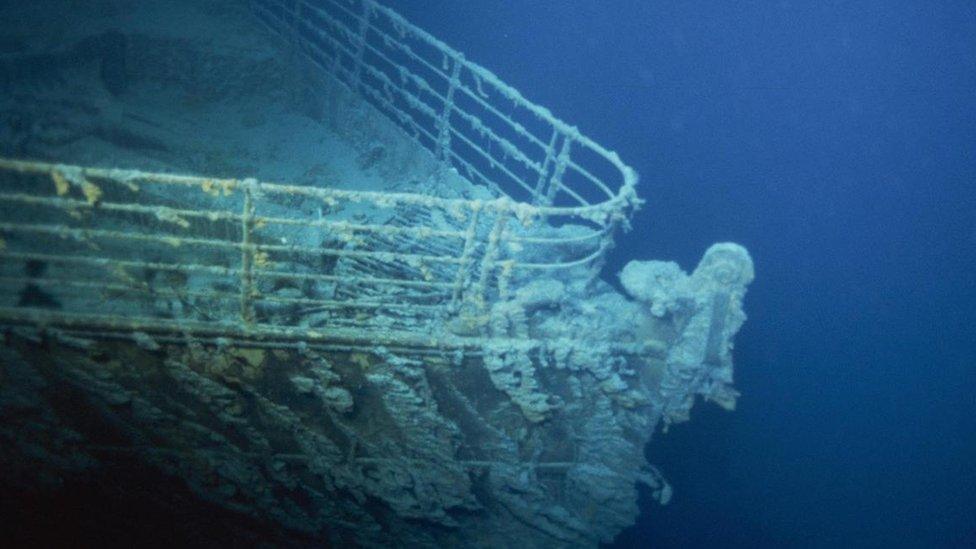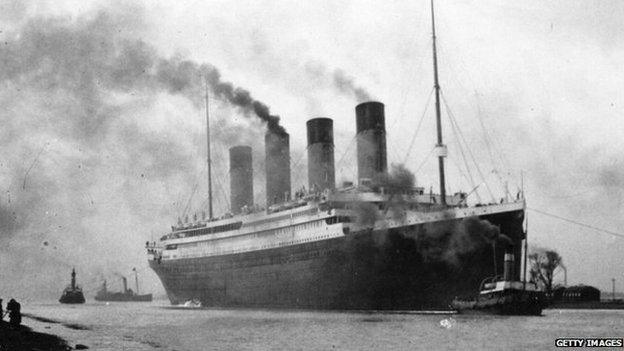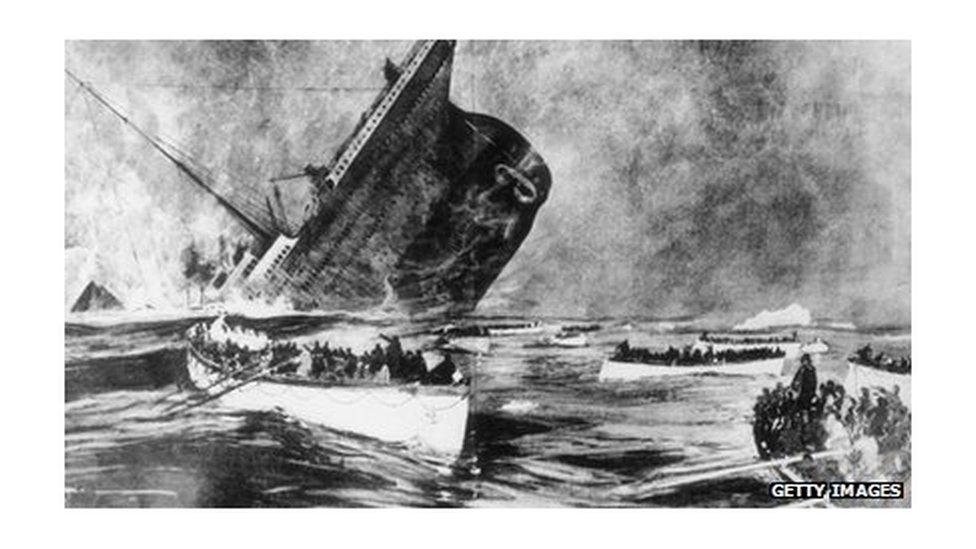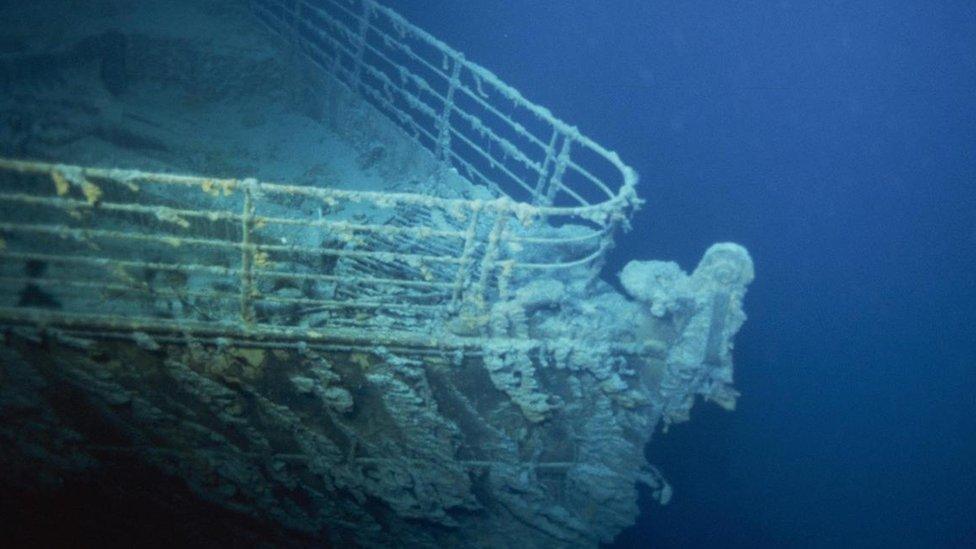The Titanic: Should we still be collecting old pieces from it?
- Published
- comments

Rust-forming bacteria is rapidly eating away at the iconic shipwreck of the Titanic
Relatives of those who were onboard the Titanic want to put a stop to people collecting old pieces from it.
In 1912, the ship was travelling from England to the United States when it hit an iceberg and sank to the bottom of the sea, at a depth of 2.5 miles. It was about 370 miles off the shores of Newfoundland, Canada.
At the time the crew sent an SOS message on a special machine - a wireless telegraph machine - and that's what officials and historians would like to bring to the surface and study.
But some people say the ship should be left alone - they argue that it is disrespectful to strip it of its relics.
Judy Seargent is the granddaughter of someone who was on the Titanic and survived - many others didn't though. She said: "It is a grave. They should respect the family's opinions."
She wanted the relatives of the people who were on board to be consulted first.
However, in May plans to retrieve the artefact were given the go ahead.
The machine isn't the only thing to be taken from the ship - over 5500 relics have already been brought up from the wreckage and surrounding sea bed.
Taking out this particular item has been a big deal to lots of people though- so much so that the case was taken to court in the United States.
A federal judge in Virginia ruled that a firm could extract the device because of its historical and cultural importance, and concerns that it could be lost in the decaying wreckage.

The Titanic set sail to New York from Southampton in 1912
Historians want to study the artefact for many reasons.
Tim Wander, a Marconi historian and author from Chelmsford Museum, is one of them.
It is the surname of Guglielmo Marconi. He was the Nobel Prize-winning physicist and inventor who made the wireless telegraph on the Titanic.
He said people will buy tickets to go and see the telegraph in a museum, and that it has a lot of "historical and emotional value".
Wander added that the telegraph saved 730 lives - and that people would want to see that piece of history.

So, what do you think? Should historians be able to retrieve artefacts, like this machine? Or do you think the shipwreck should be left as it is?
Let us know what you think in the comments and by voting:
If you can't see this vote, click here.
- Published19 October 2018

- Published11 April 2012
